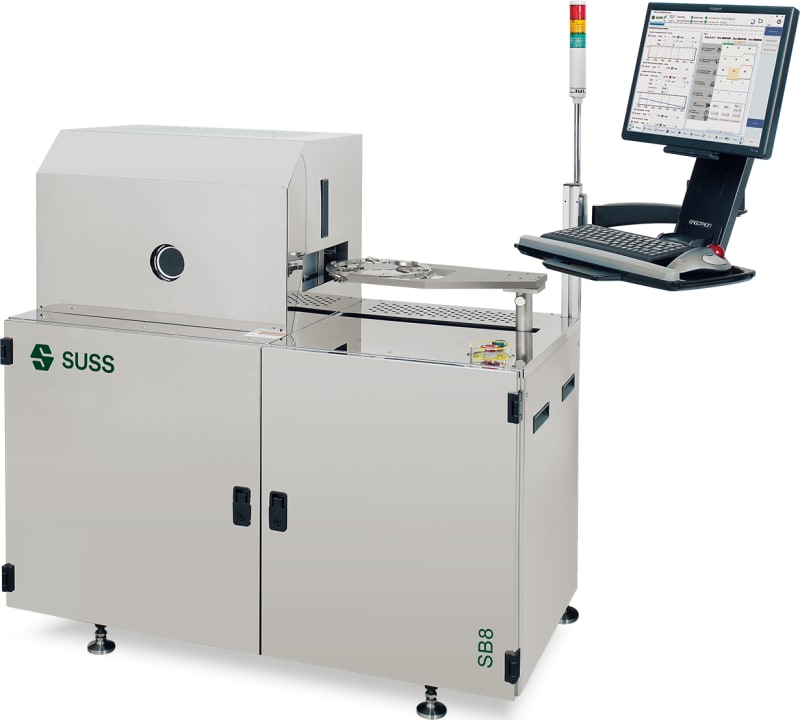SB8 Gen2 Wafer Bonder
Universal System for Wafer Bonding
With the SB8 Gen2 SUSS provides a semi-automated platform for multiple bonding processes. Handling wafers up to 200mm as well as various shapes and types of substrates the SB8 Gen2 presents itself as a flexible tool for various applications and process environments. Application areas are packaging as well as structuring applications in MEMS, LED, advanced packaging, 2.5D integration, and 3D integration.
The SB8 Gen2 permits an easy switch from R&D to pilot production and finally volume manufacturing.
Highlights
- Versatility
- Process stability
- High throughput capability

A configurable bond chamber offers wide ranges for temperature, bond forces, and chamber pressure increasing the number of possible applications and allowing the user to adapt to changing process requirements.
In combination with the SUSS Bond Aligner suite, the SB8 Gen2 offers a highly precise prebond alignment.
